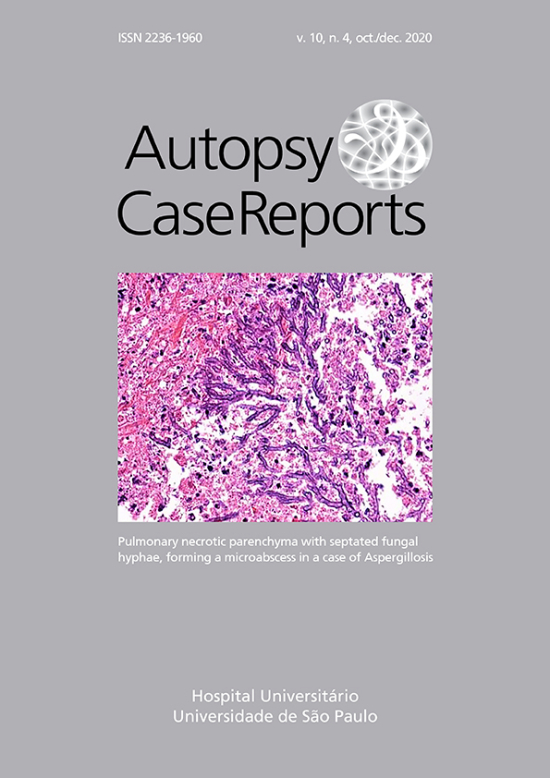Post-mortem findings in Staphylococcus aureus acute infective endocarditis
DOI:
https://doi.org/10.4322/acr.2020.212Keywords:
Staphylococcus aureus, Staphylococcal Infections, Endocarditis, Bacterial, Sudden deathAbstract
Infective endocarditis (IE) is a microbial infection of the heart valves or the mural endocardium that leads to the formation of vegetations composed of thrombotic debris and microorganisms often associated with the destruction of the cardiac tissues. Most of the infections are bacterial (bacterial endocarditis), although fungi and other microorganisms can be etiological agents. Causative organisms differ among the major high-risk groups. Virulent microorganisms like Staphylococcus aureus, commonly found on the skin, can infect normal or deformed valves and are responsible for 20-30% of all IE cases. Staphylococcus aureus is the major offender in IE among intravenous drug abusers. Acute infective endocarditis is typically caused by infection of a previously normal heart valve by a highly virulent organism (e.g., Staphylococcus aureus) that rapidly produces necrotizing and destructive lesions. These infections may be difficult to cure with antibiotics, and despite appropriate treatment, death can ensue within days to weeks. Here we present autopsy findings of a 31-yearold male patient who died of acute infective endocarditis caused by Staphylococcus aureus as the causative organism.
Downloads
Downloads
Published
Issue
Section
License
Copyright (c) 2020 Autopsy and Case Reports

This work is licensed under a Creative Commons Attribution 4.0 International License.
Copyright
Authors of articles published by Autopsy and Case Report retain the copyright of their work without restrictions, licensing it under the Creative Commons Attribution License - CC-BY, which allows articles to be re-used and re-distributed without restriction, as long as the original work is correctly cited.



